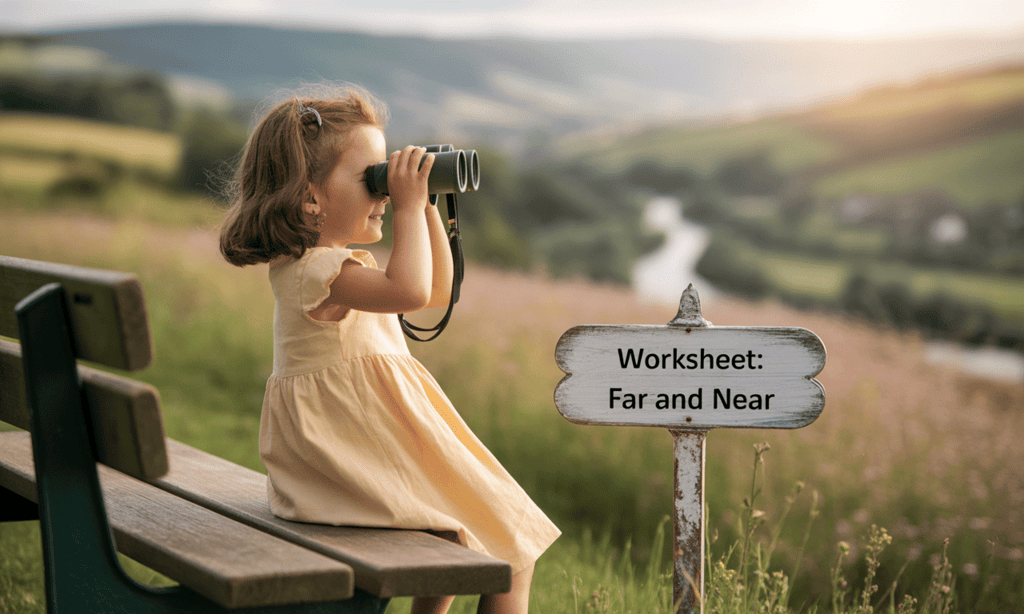Worksheet: Far and Near | Mathematics (Maths Mela) Class 5 - New NCERT PDF Download

Q1: 250 cm = ? m
(a) 2.5 m
(b) 25 m
(c) 0.25 m
(d) 2500 m
Q2: A rope is 600 cm long. If cut into 10 equal pieces, the length of each piece is:
(a) 60 m
(b) 60 cm
(c) 6 m
(d) 600 m
Q3: 5 km = ? m
(a) 500
(b) 5000
(c) 50
(d) 50,000
Q4: A train is 250 m long. What is its length in kilometers?
(a) 0.025 km
(b) 2.5 km
(c) 0.25 km
(d) 25 km
Q5: A ribbon is 36 m long. If each piece is 4 m long, how many pieces can be cut?
(a) 8
(b) 9
(c) 10
(d) 12
Q6: Convert the following into centimeters.
(i) 66 mm
(ii) 32 dm
(iii) 4 cm 8 mm
(iv) 63 km
(v) 16 m
(vi) 1.5 dm
Q7: Convert the following into kilometers.
(i) 14 m
(ii) 59 hm
(iii) 136 dam
(iv) 207 dam
(v) 5600 cm
(vi) 10000 cm
Q8: Compare the following using >, < or = sign:
(i) 702 cm .......... 503 cm
(ii) 2 m .......... 9 m
(iii) 800 cm .......... 80 m
(iv) 702 cm .......... 5 m
(v) 8 km .......... 7000 m
(vi) 625 cm .......... 9 m
(vii) 10 m .......... 4 cm
(viii) 1000 m .......... 1000 km
(ix) 100 cm .......... 100 m
(x) 1 km .......... 1000 m
Q9: A road between two villages is 8 km 250 m long. Out of this, workers have repaired 5 km 750 m. How much road is still left to repair?
Q10: A cloth merchant bought a roll of cloth 45 m long. He sold 12 m 40 cm to one customer and 18 m 60 cm to another. How much cloth is left with him?
Q11: The distance from a school to the railway station is 4 km 300 m. The bus travels this distance in the morning and returns in the afternoon. What is the total distance covered by the bus in a day?
Q12: A ribbon is 96 m long. It is cut into 12 equal pieces. What is the length of each piece?
Q13: A man walks 3 km every day. How many kilometers will he walk in 15 days?
Q15: A road is 420 m long. It is divided into 7 equal sections. What is the length of each section?
You can access the solutions to this worksheet here.
|
35 videos|319 docs|7 tests
|
FAQs on Worksheet: Far and Near - Mathematics (Maths Mela) Class 5 - New NCERT
| 1. What is the difference between far and near in terms of distance perception? |  |
| 2. How do we perceive distance visually? |  |
| 3. Why is understanding the concept of 'far' and 'near' important in daily life? |  |
| 4. Can the perception of distance change under different conditions? |  |
| 5. How can children learn about distance effectively? |  |
















